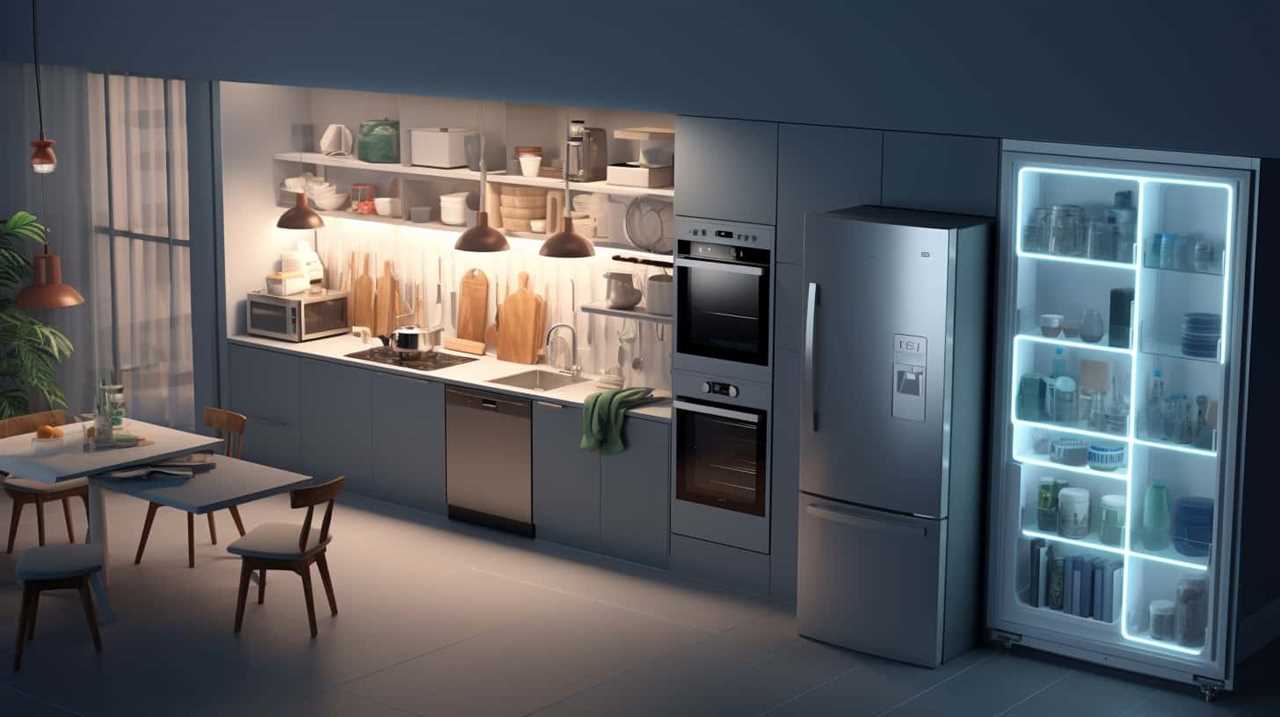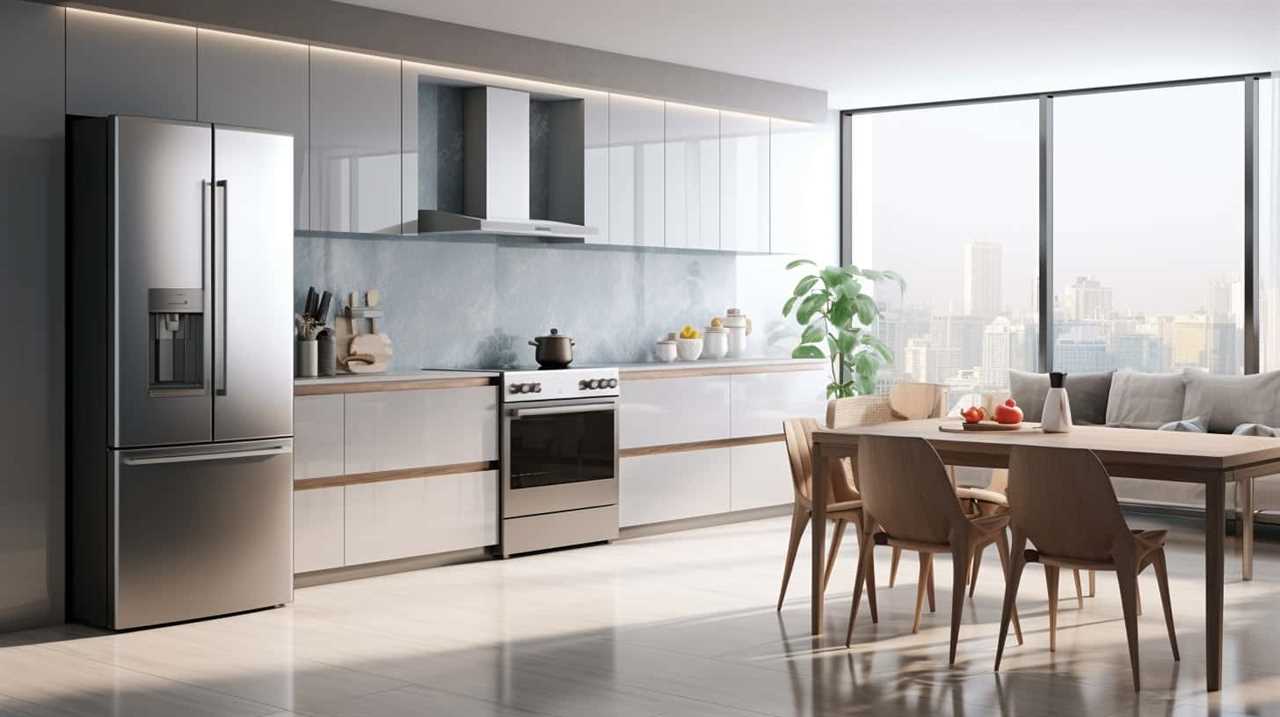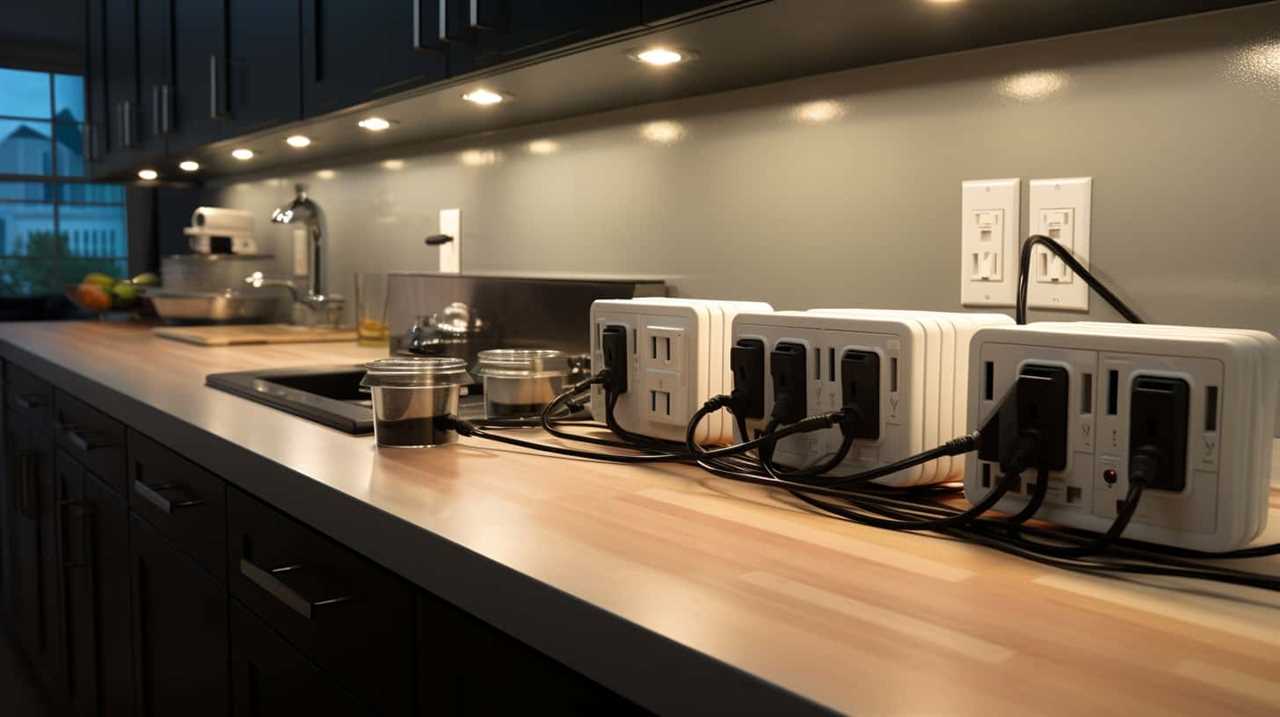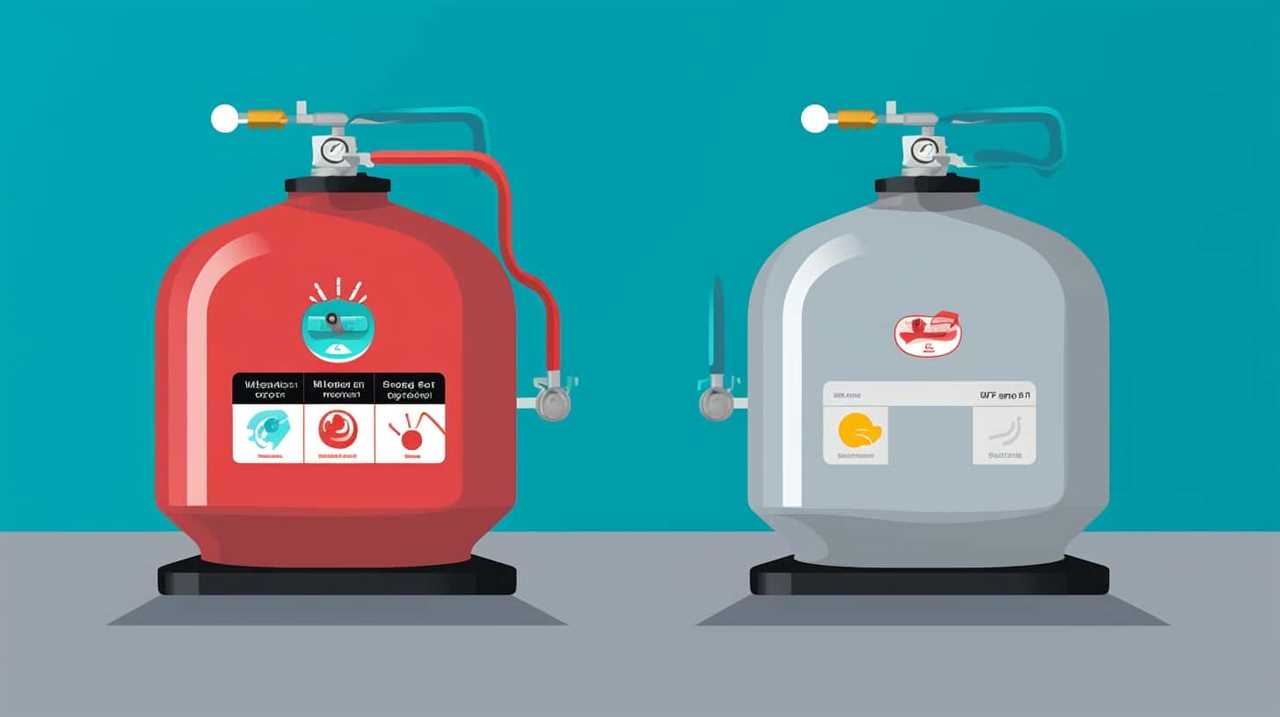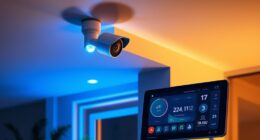Ever thought about how household appliances operate? Let’s explore the realms of AC and DC to unveil the mysteries behind energizing our daily gadgets.
In this article, we explore the differences between alternating current and direct current, their impact on energy efficiency, and the future of home appliances.
Join us as we shed light on this technical topic, equipping you with the knowledge to choose the right appliances for your electrical system.
Let’s embark on this journey of understanding together.
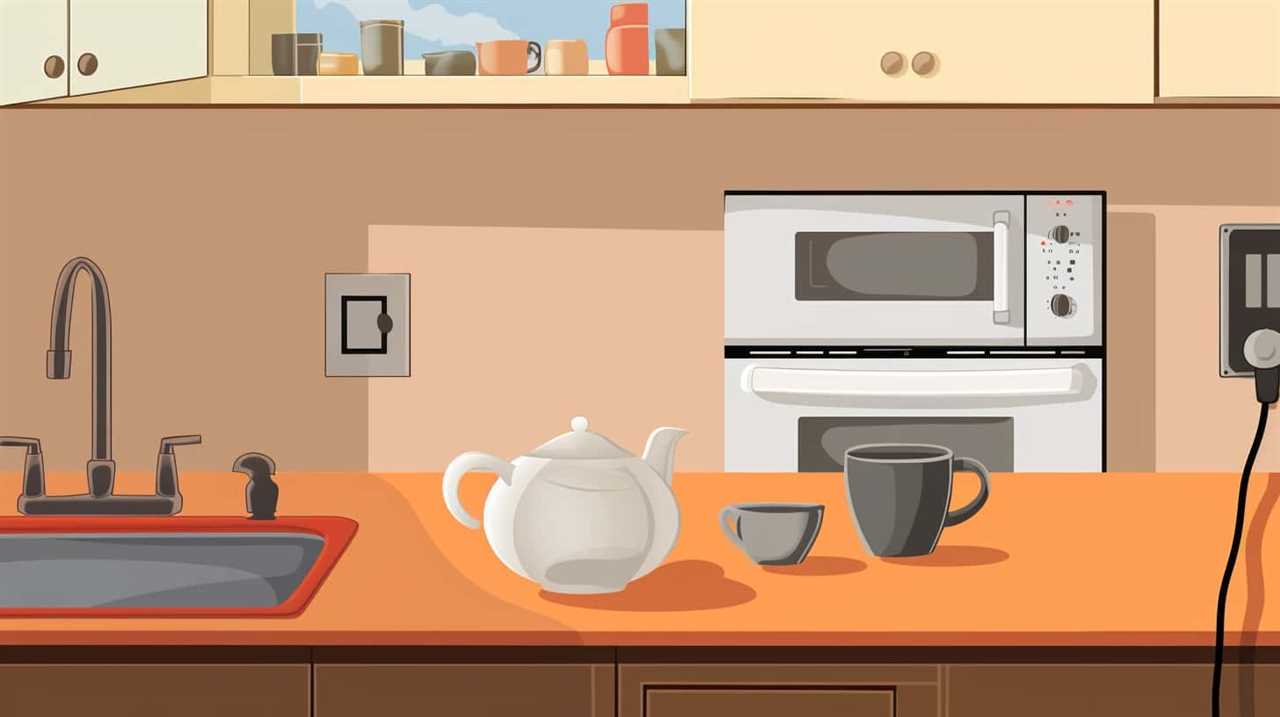
Key Takeaways
- AC is the most commonly used type of electrical current in residential settings.
- Most home appliances run on AC power supplied by the electrical grid.
- Some appliances, like laptops and smartphones, require DC power and come with a power adapter.
- AC appliances tend to be less expensive and more readily available compared to DC appliances.
Understanding AC and DC
We will explore the fundamentals of AC and DC and how they power our home appliances. Understanding power sources is essential in comprehending the compatibility of AC and DC in various home appliances.
AC, or alternating current, is the type of electrical power that’s commonly used in homes. It’s characterized by the flow of electricity that periodically changes direction.
On the other hand, DC, or direct current, is the type of electrical power that flows in only one direction. While AC is the primary power source in homes, some appliances, such as certain electronic devices, may require DC power. To ensure compatibility, power adapters or converters are often used to convert AC to DC.
Now, let’s move on to the basics of alternating current and its importance in powering our appliances.

The Basics of Alternating Current
Let’s now explore the basics of alternating current (AC) and its importance in powering home appliances.
AC and direct current (DC) are the two main types of electrical current, but AC is the most commonly used in residential settings. The key difference between AC and DC lies in the direction of the flow of electrons.
Understanding AC is crucial as it enables the efficient transmission and distribution of electricity, allowing our appliances to function effectively.
AC Vs. DC: Differences
One key difference between AC and DC is the way the electrical current flows. AC, or alternating current, is a type of electrical current in which the direction of the flow of electrons periodically reverses. This means that the current alternates between positive and negative values, resulting in a sinusoidal waveform. On the other hand, DC, or direct current, is a type of electrical current in which the flow of electrons is unidirectional, with a constant positive or negative value. To better understand the differences between AC and DC, let’s take a look at the following table:

| AC | DC |
|---|---|
| Alternates in direction | Flows in one direction |
| Used in power grids and homes | Used in batteries and electronic devices |
| Can be easily transformed in voltage | Requires a power supply to change voltage |
| More efficient for long-distance transmission | Better for small-scale applications |
As we can see, AC has its advantages in terms of its ability to be easily transformed in voltage and its efficiency in long-distance transmission. On the other hand, DC is more suitable for small-scale applications and is commonly used in batteries and electronic devices. Understanding the differences between AC and DC is crucial for mastering electrical systems and their applications.
Importance of Alternating Current
To understand the importance of alternating current, let’s delve into the basics of how it works.
Alternating current, or AC, is a type of electrical current where the flow of electrons periodically changes direction. AC has several advantages over direct current (DC) when it comes to household appliances.
One of the key advantages is the ability to transmit AC power over long distances with minimal power loss. This makes it more efficient for delivering electricity to homes and businesses.
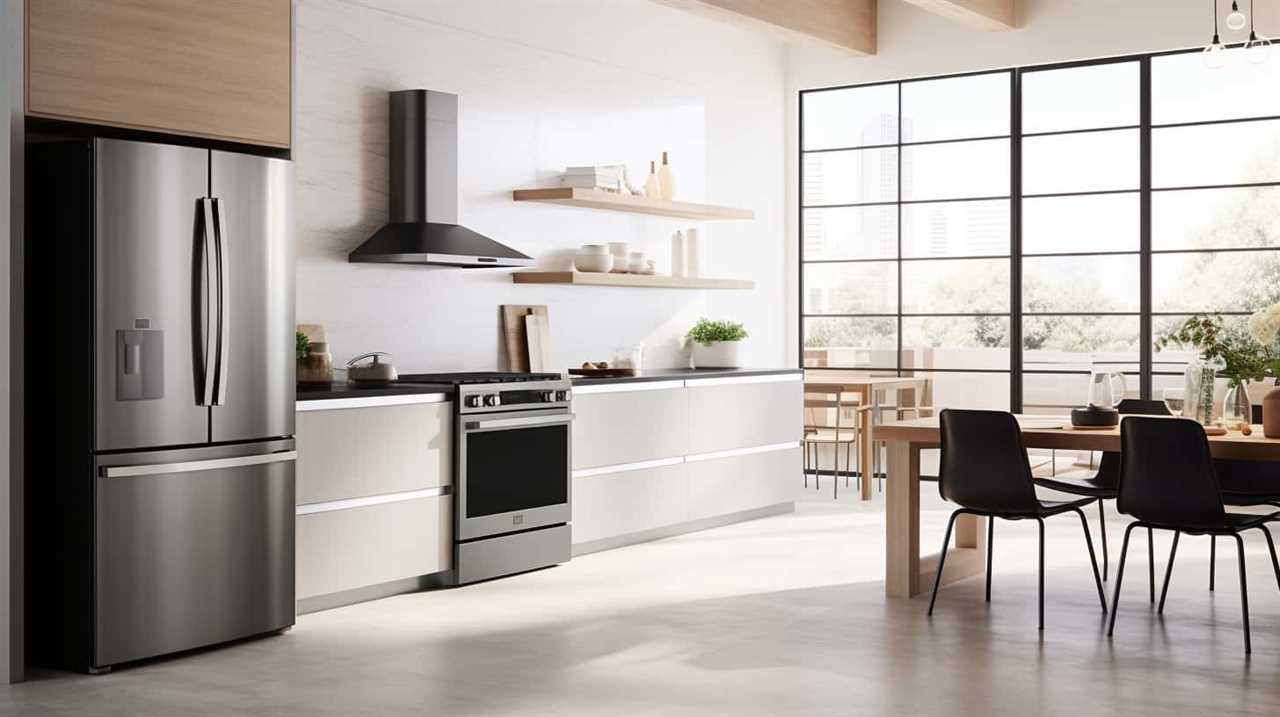
Additionally, AC can be easily converted to different voltage levels using transformers, allowing for more efficient distribution and utilization of electrical energy.
On the other hand, most household appliances, such as refrigerators, air conditioners, and televisions, operate on DC power. Therefore, AC power needs to be converted to DC power using rectifiers before being supplied to these appliances.
Unraveling the Mysteries of Direct Current
Now let’s delve into the mysteries of direct current (DC).
Direct current is the flow of electric charge in a single direction, unlike alternating current (AC) that constantly changes direction.

Understanding the differences between AC and DC is crucial when it comes to home appliance compatibility.
AC Vs DC: Differences
As we explore the differences between AC and DC, we uncover the mysteries of direct current. Understanding electrical currents is crucial for mastering the field of electronics. Here are four key differences between AC and DC:
- Direction of flow: In AC, the flow of current changes direction periodically, while in DC, it flows in a single direction.
- Voltage level stability: AC voltage can be easily regulated, allowing for stable power transmission over long distances. DC voltage, on the other hand, requires additional equipment for regulation.
- Efficiency in transmission: AC has the advantage of being more efficient for long-distance transmission due to its ability to be easily stepped up or down in voltage. DC transmission, although efficient at short distances, requires more complex conversion processes for longer distances.
- Compatibility with appliances: Most home appliances are designed to run on AC power, making it the preferred choice for residential and commercial applications.
Home Appliance Compatibility
Continuing the discussion from the previous subtopic, we’ll now delve into the compatibility of home appliances with direct current (DC) and unravel the mysteries surrounding it.
When it comes to home appliance power sources, most appliances are designed to run on alternating current (AC) since that’s what’s supplied by the power grid. However, with the increasing popularity of renewable energy sources such as solar panels and batteries, the use of DC power is becoming more prevalent.
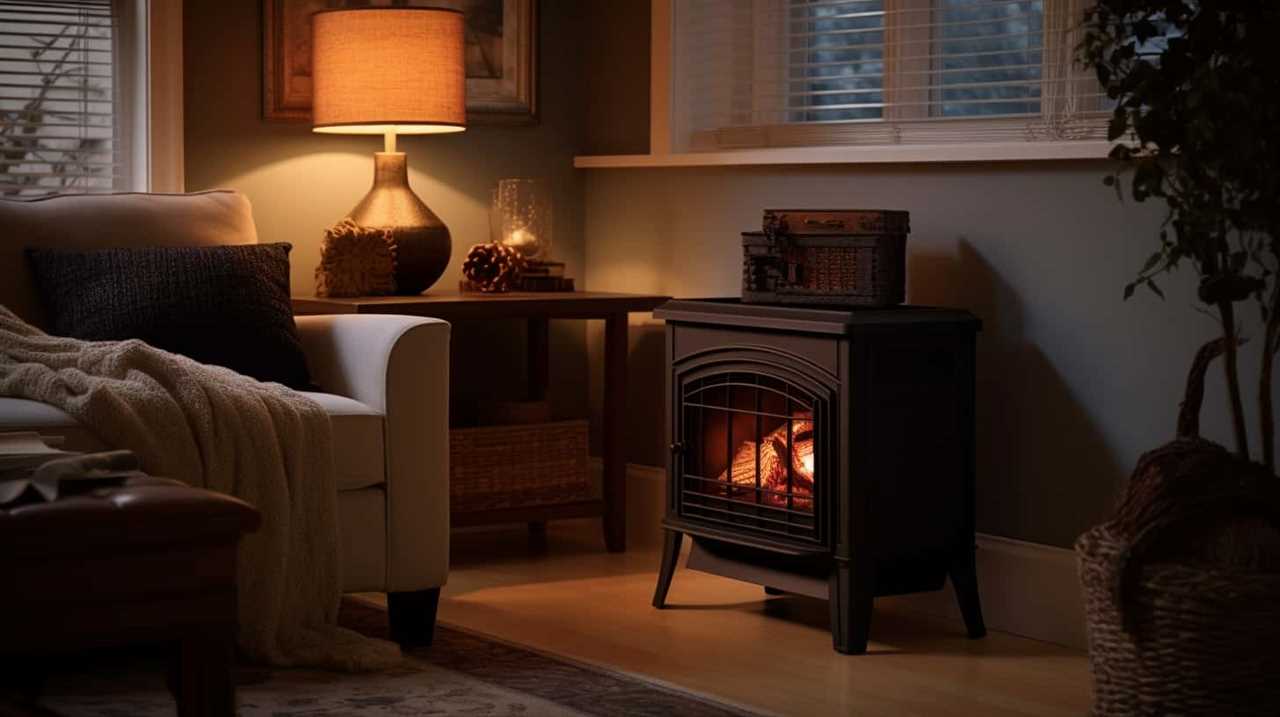
To ensure compatibility, it’s important to consider the voltage requirements of your appliances. Some appliances, such as laptops and smartphones, come with built-in converters to handle both AC and DC power. However, others may require additional equipment, such as inverters, to convert DC power to AC power.
Understanding the compatibility of home appliances with different power sources is crucial in order to make informed decisions about powering your appliances efficiently and effectively.
In the next section, we’ll explore how home appliances are powered and the various options available.
How Home Appliances Are Powered
We power our home appliances using either AC or DC electricity. Here are four key points to understand how home appliances are powered:

- AC Power Source: Most of our home appliances run on AC (alternating current) power. AC power is supplied by the electrical grid and is commonly used because it can be easily transmitted over long distances.
- DC Power Source: Some appliances, such as laptops and smartphones, require DC (direct current) power. These devices typically come with a power adapter that converts AC power from the electrical outlet into DC power.
- Energy Conversion: Appliances that run on AC power require internal components like transformers to convert the incoming AC power to the appropriate voltage and current required by the appliance.
- Energy Consumption: Different appliances have varying energy consumption rates. It’s important to consider the power rating and energy efficiency of each appliance to optimize energy usage and reduce electricity costs.
Understanding how our home appliances are powered helps us make informed decisions regarding energy consumption and contributes to a more efficient use of power sources.
AC Vs. DC: Pros and Cons
To compare the pros and cons of AC and DC power, let’s explore their differences and applications.
AC, or alternating current, is the type of power supplied by utility companies and is commonly used in most home appliances. One of the major advantages of AC is its ability to be transmitted over long distances without significant loss of energy. This is due to the fact that AC can be easily stepped up or down in voltage using transformers.
On the other hand, DC, or direct current, is the type of power produced by batteries and solar panels. DC is often more efficient than AC, as it doesn’t require conversion from AC to DC for certain devices. However, DC power transmission is less efficient over long distances.
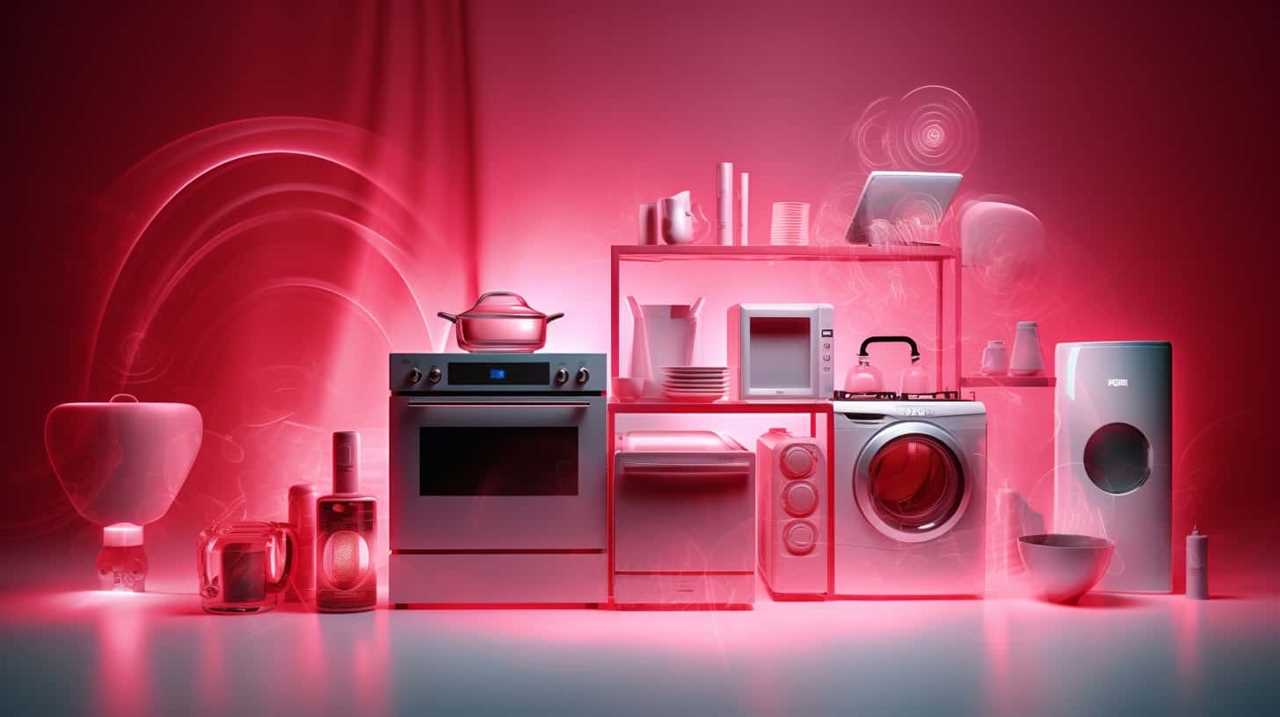
Additionally, AC appliances tend to be less expensive and more readily available compared to DC appliances. In terms of energy efficiency, both AC and DC have their own advantages and disadvantages. AC appliances tend to be more energy efficient overall due to the widespread availability and efficiency of AC power sources.
However, DC appliances are often more energy efficient in terms of conversion and usage, since they don’t require AC to DC conversion. Ultimately, the choice between AC and DC appliances depends on factors such as availability, cost, and specific energy efficiency requirements.
The Role of Transformers in Converting AC to DC
Converting AC to DC, transformers play a crucial role in the operation of home appliances. Here are four key points to understand about the usage of transformers in converting electricity:
- Transformers are devices that transfer electrical energy between two or more circuits.
- They work on the principle of electromagnetic induction, where alternating current flowing in the primary coil induces a changing magnetic field, which in turn generates a voltage in the secondary coil.
- Transformers are essential for converting the high voltage AC power supplied by the utility grid into lower voltage DC power that’s suitable for use by home appliances.
- By stepping down the voltage, transformers ensure that the appliances receive the appropriate level of electricity, preventing damage and optimizing performance.
Understanding the role of transformers in converting AC to DC is crucial to comprehend how home appliances receive the right power supply.

In the next section, we’ll explore common appliances that run on AC.
Common Appliances That Run on AC
Most home appliances that run on AC power include a wide range of devices, such as refrigerators, televisions, and air conditioners. These common appliances are designed to be compatible with the electrical systems found in most households, which typically provide AC power. AC power, or alternating current, is the type of electricity that flows in both directions, constantly changing its polarity. This allows for efficient transmission of power over long distances and is the standard used in most residential and commercial buildings. To provide further clarity, here is a table showcasing some of the common appliances that run on AC:
| Appliance | Typical Power Rating (Watts) | Voltage Requirement |
|---|---|---|
| Refrigerator | 100-800 | 120-240 |
| Television | 50-500 | 120-240 |
| Air Conditioner | 500-5000 | 120-240 |
Note that the power ratings and voltage requirements can vary depending on the specific model and brand of the appliance. It is important to check the manufacturer’s specifications for accurate information.
Surprising Appliances That Run on DC
Now let’s delve into the surprising appliances that actually run on DC power, continuing our discussion from the previous subtopic. While it’s commonly known that most home appliances run on AC power, there are a few exceptions that operate on DC power. These appliances not only offer energy consumption benefits but also provide unique advantages in certain scenarios.
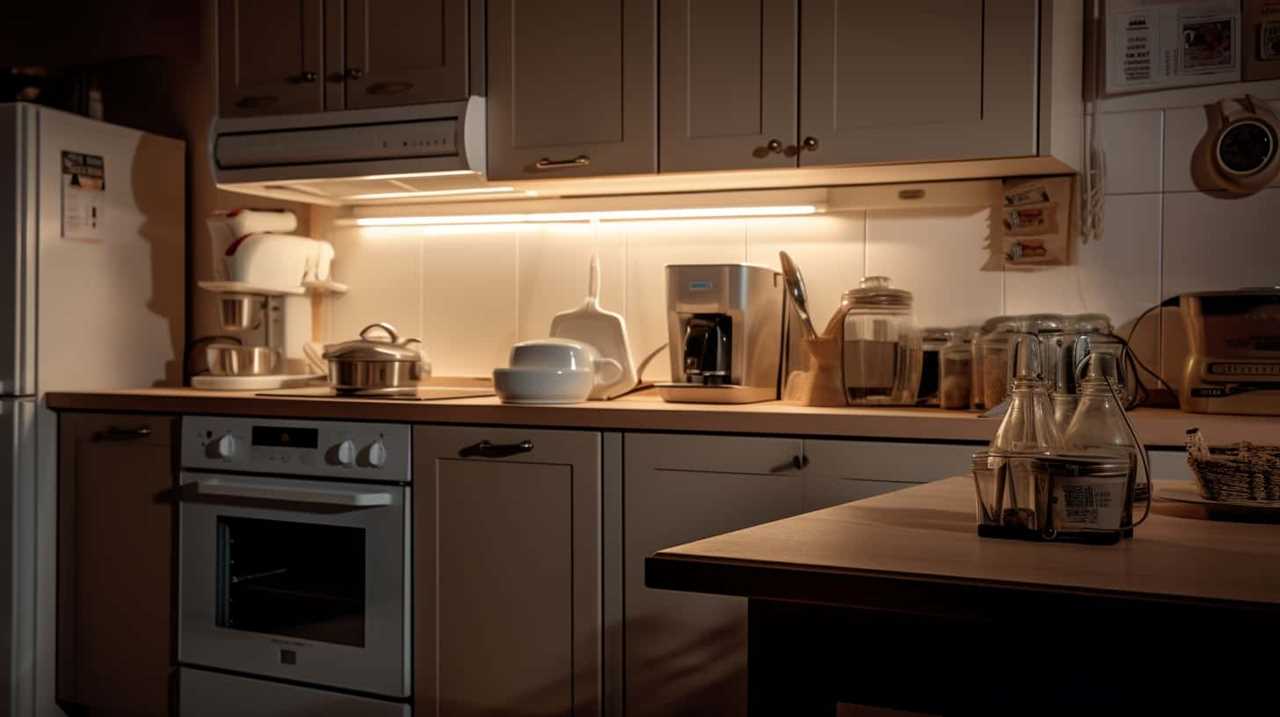
Here are four surprising appliances that run on DC:
- Solar-powered refrigerators: These appliances use DC power directly from solar panels, eliminating the need for an inverter and reducing energy losses.
- LED lighting: LED lights are DC-powered, and their low energy consumption makes them highly efficient and long-lasting.
- Electric vehicles (EVs): EVs run on DC power stored in their batteries, offering a cleaner and more sustainable alternative to traditional gasoline-powered vehicles.
- Portable electronics: Devices like smartphones, tablets, and laptops are powered by DC batteries, allowing for easy recharging and portability.
These appliances showcase the benefits of DC-powered technology, including improved energy efficiency and reduced reliance on traditional power sources.
The ImpACt of AC and DC on Energy Efficiency
While it’s commonly known that home appliances primarily run on AC power, understanding the impact of AC and DC on energy efficiency is crucial. Energy consumption is a significant concern for households and the environment.
When it comes to energy efficiency, DC power has several advantages over AC power. DC power is more efficient because it doesn’t require the conversion from AC to DC, which results in energy loss. This conversion process, known as rectification, can lead to up to 10% energy loss. By using DC power directly, appliances can operate more efficiently and reduce overall energy consumption.

Furthermore, DC power offers sustainability benefits. It can be generated from renewable energy sources such as solar panels and wind turbines, making it an eco-friendly option. By utilizing DC power, households can reduce their carbon footprint and contribute to a more sustainable future.
The Future of AC and DC in Home Appliances
The future of AC and DC in home appliances holds immense potential for improving energy efficiency and sustainability. As advancements in smart home technology continue to evolve, we can expect to see significant progress in the integration of renewable energy sources and the adoption of DC power in home appliances. Here are four key developments to anticipate:
- Increased use of DC power distribution in homes, reducing energy losses during conversion from AC to DC.
- Smart appliances that can seamlessly switch between AC and DC power sources, optimizing energy usage and reducing reliance on the grid.
- Energy storage solutions integrated with home appliances, allowing for efficient use of renewable energy and reducing peak demand on the grid.
- Collaborative efforts between appliance manufacturers and energy providers to develop standardized protocols for AC and DC power transfer, promoting interoperability and ease of integration.
These advancements won’t only enhance energy efficiency but also contribute to a more sustainable future.
Tips for Choosing the Right Appliances for Your Electrical System
When choosing appliances for your electrical system, it’s crucial to consider voltage compatibility. Different appliances have different AC/DC requirements, and it’s essential to assess your electrical system’s compatibility with the appliances you intend to use.

Ensuring that the voltage requirements of your appliances align with your electrical system will help prevent any potential damage or safety hazards.
Voltage Compatibility: Ac/Dc Requirements
For our electrical system, we need to consider the voltage compatibility of appliances, both in terms of AC and DC requirements. When choosing appliances, it’s crucial to ensure that they’re compatible with the voltage regulation of our electrical system. Here are some key factors to consider:
- Voltage rating: Check the voltage rating of the appliance to ensure it matches the voltage supplied by our electrical system.
- Power consumption: Determine the power consumption of the appliance to ensure that it doesn’t exceed the capacity of our electrical system.
- AC or DC compatibility: Identify whether the appliance requires AC or DC power and ensure that our electrical system can provide the required power type.
- Surge protection: Consider appliances with built-in surge protection to safeguard against voltage fluctuations.
By carefully considering these factors, we can select appliances that are compatible with our electrical system and avoid any potential electrical issues.
With the voltage compatibility sorted, let’s now move on to assessing the overall compatibility of our electrical system.

Assessing Electrical System Compatibility
To ensure that our chosen appliances are compatible with our electrical system, we must assess their compatibility by considering factors such as voltage rating, power consumption, and the type of power required, while also taking into account the presence of surge protection.
Evaluating appliance power consumption is crucial in determining whether our electrical system can handle the load. Power consumption refers to the amount of electrical energy an appliance uses when operating. It’s measured in watts and can vary significantly depending on the type and size of the appliance.
Using appliances with higher power consumption than our electrical system can handle can lead to overloading, which can result in electrical fires or damage to the appliances. Therefore, it’s essential to assess the power consumption of our appliances and ensure that they’re within the limits of our electrical system to avoid potential risks of using incompatible appliances.
Final Thoughts: the Importance of Understanding AC and DC in Our Daily Lives
We must recognize the significance of understanding AC and DC in our daily lives. Having a thorough understanding of AC (alternating current) and DC (direct current) is crucial, especially in the world of technology. Here are some key takeaways:

- Benefits of understanding AC and DC in technology:
- Allows us to determine which type of current is required by various devices and appliances.
- Helps us design and build efficient electrical systems.
- Facilitates troubleshooting and maintenance of electrical systems.
- Enables us to make informed choices when purchasing electrical equipment.
- Potential dangers of mixing AC and DC power:
- Incompatibility between AC and DC devices can cause damage to both the device and the electrical system.
- Mixing AC and DC power without proper precautions can result in safety hazards, such as electrical shocks or device malfunctions.
Frequently Asked Questions
Are There Any Home Appliances That Can Be Powered by Both AC and Dc?
Yes, there are some home appliances that can be powered by both AC and DC. The advantages of using DC powered appliances include increased efficiency and compatibility with renewable energy sources. However, disadvantages include higher initial costs and limited availability.
How Does the Use of AC or DC ImpACt the Lifespan of Home Appliances?
The impact of voltage on appliance performance is significant. AC offers advantages over DC in home appliances due to its ability to easily transform voltage levels and its compatibility with the power grid.
Can Home Appliances Be Easily Converted From AC to DC or Vice Versa?
Home appliances can be easily converted from AC to DC or vice versa, improving their efficiency. This convertibility allows for greater control and adaptability, resulting in optimized performance and a longer lifespan.
Are There Any Safety Considerations When Using Home Appliances Powered by Dc?
Safety considerations when using home appliances powered by DC include proper grounding, insulation, and protection against overloads and short circuits. Advantages of DC-powered appliances include energy efficiency and compatibility with renewable energy sources. Disadvantages include limited availability and higher cost of DC appliances.

What Are the Potential Energy Savings When Using Dc-Powered Home Appliances Compared to Ac-Powered Ones?
Switching to DC-powered home appliances can have significant cost implications and environmental benefits. Compared to AC-powered appliances, DC-powered ones can provide potential energy savings, reducing electricity consumption and promoting sustainability.
Conclusion
In conclusion, understanding the difference between AC and DC is crucial when it comes to powering home appliances.
While AC is the standard for most household devices due to its ability to travel long distances, DC offers advantages in terms of energy efficiency.
As we continue to innovate and develop new technologies, it’s important to consider the impact of AC and DC on our daily lives.

So remember, knowledge is power, and being informed about AC and DC can help us make the right choices for our electrical systems.

